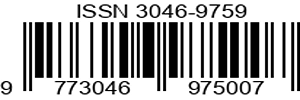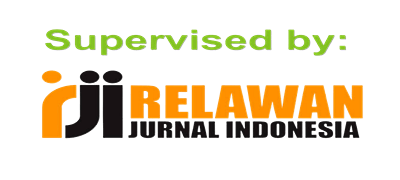USING CLUSTERING TECHNIQUE TO IMPROVE STUDENTS’ DESCRIPTIVE TEXT WRITING ACHIEVEMENT
DOI:
https://doi.org/10.62734/jetling.v4i1.256Keywords:
writing achievement, clustering technique, descriptive textAbstract
Writing is a productive skill in learning language. Many students have difficulties in writing a foreign language. Writing needs a long term process and pre activities before paragraph making. This research has a goal to solve the problem above through clustering technique to improve students’ writing achievement in descriptive text. CAR (classroom action research) was chosen as method in this research at Islamic senior high school based in Banyuwangi, East Java, Indonesia. The data of the study was obtained by writing test and observation checklist. All collected data were analyzed quantitatively. The result of writing test shows that there is significant improvement from the score before the action was given. There were 69% out of 26 students achieved minimum passing grade. There was significant improvement from 19% to 69%. The improvement in this study indicates that students are able to produce new ideas into a good text and brainstorm idea before they write a draft. Moreover, the use of clustering technique also could improve students’ active participation the teaching and learning process. The result of students participation increased from 16 students (62%) to 24 students (92%).
Downloads
References
Adriati, M. (2013). The Use of Clustering Technique In Writing Narrative Text.
Journal of English and Education, p. 39-46.
Arikunto, S. 2006. Prosedure Penelitian Suatu Tindakan Praktik (Edisi Revisi VI).
Jakarta: PT. Rineka Cipta.
Astuti, R.N. (2006). Teaching Writing Procedure Text By Combining Mind Mapping and Clustering Technique at Junior High School. Unpublished thesis. Padang: STKIP PGRI of West Sumatera.
Baroudy, I. (2008). Clustering Involves Writing Down A Word or Phrase and Engaging in Free Association. The International Journal of Language Society and Culture, p.7.
Bram, B. (1995). Write Well. Yogyakarta: Kanisius.
Brown, J.D (1996). Testing in Language Programs.New Jersey: Prestice Hul Regents. Burn, A. (2010). Doing Action Research in English Language Teaching. New York:
Routledge.
Burns, A. 1999. Collaborative Action Research For English Language Teaching.
Cambridge: Cambridge University Press.
Dietsch, B.M. 2003. Reasoning and Writing Well: A Rhetoric, Research Guide, Reader, and Hand Book. New York: McGraw-Hill Companies, Inc.
Fairbain & Winch, D (1996). Writing Paragraph and Essay. London: Wadsworth Publishing Company.
Grace, E. (2007). Look Ahead An English Course for Senior High School Students Year X. Jakarta: Erlangga.
Gufron, M., A. (2013). The Implementation of Clustering Technique To Improve Students’ Writing Skill In Descriptive Text, p.1: Unpublished thesis.
Bojonegoro: IKIP PGRI Bojonegoro.
Harmer, J. (2004). How to Teach Writing. London: Longman.
Hartini. (2016). Improving Students’ Ability In Writing Descriptive Text Using Clustering Technique, p.1: Unpublished thesis.
Hayati, N. (2017). The Use Clustering Technique to Improve Students’ Achievement In Writing Recount Text at MAS PAB 1 SAMPALI. Unpublished thesis.
Medan: The State Islamic University of North Sumatera.
Heaton (1998). How to Develop Writing Skills. New York: Longman. Hughes, A. (2003) Testing for Language Teachers. Cambridge: Cambridge
University Press.
Inal, S. (2014). The Effects of The Clustering Pre-Writing Strategy On Turkish Students’ Writing Achievement and Their Writing Attitudes. Asos Journal. P. 593-597.
Kellog, R. T. (1990). Effectiveness of prewriting strategies as a function of task demands. The American Journal of Psychology, 103(3), 327-342.
Knapp, P & Watkins, M. (2005). Genre, Text, Grammar Technologies for Teaching and Assessing Writing. Sydney: University of New South Wales Press Ltd.
Latief, M.A (2013). Research Methods On Language Learning An Introduction.
Malang: Universitas Negeri Malang Press.
Lestari, F.H. (2017). Increasing Reading Comprehension CIRC Strategy With E- Comic at X-I Class of SMA 17 Agustus 1945 Banyuwangi in the 2016/2017 Academic Year. Unpublished thesis. Banyuwangi: University of 17 Agustus 1945 Banyuwangi.
Maria, L., C., & Francesca, R., F. (2014). Second Language Writing: use of the World Wide Web to Improve Specific Writing. ScienceDirect, p. 235.
Oshima, A. & Hogue, A. (2007). Introduction to Academic English. White Plains: Longman.
Oxford, R. (1994). Language Learning Strategies: An Update. ERIC Digest. ERIC number ED376707.
Rico, L.G. (2000). Writing the natural way. Tarcher Penguin, New York, USA. Roza, M. (2011). Teaching Vocabulary. London: Longman.
Savage, A . & Shafiei, M. (2007). Effective Academic Writing 1. New York: Oxford University Press.
Sudarwati, Th. M & Grace, E. (2016). Pathway To English. Jakarta: Erlangga. Sundem, G. (2007). Improving Student Writing Skills. New York: Shell education. Tampubolon, S. (2014). Penelitian Tindakan Kelas. Jakarta:Erlangga.
Ur, P. 1996. A Course in Language Teaching. New York: Cambridge University Press.
Ventis, G. D. (1990). Writing to Discuss: Use of a Clustering Technique. Vol.17.
No.1.p.43.
Wolfersberger, M. (2003). LI to L2 Writing Process and Strategy Transfer: A Look at Lower Proficiency Writers. Vol. 7. No. 2 A-6.
Downloads
-
PDF
 Abstract
View: 175,
Abstract
View: 175,
 PDF
Download: 55
PDF
Download: 55
Published
How to Cite
Issue
Section
License
Copyright (c) 2024 Dian Pertiwi Pertiwi

This work is licensed under a Creative Commons Attribution-ShareAlike 4.0 International License.





